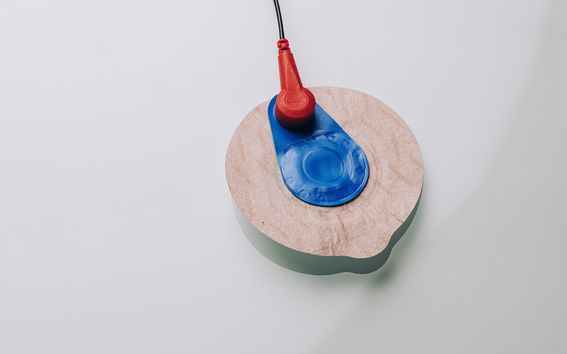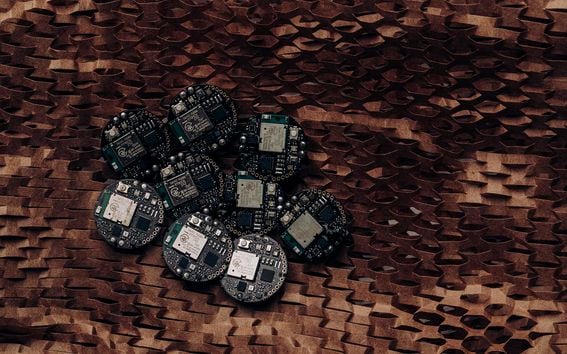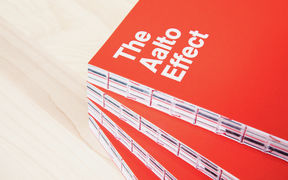
In the future, doctors will be able to tell us which conditions and diseases we're susceptible to well in advance of us falling ill. They'll also be able to inform us about any medical, nutritional or lifestyle adjustments required by our specific genetic makeup or environmental circumstances so we can work to prevent the onset of disease.
This vision is becoming reality through the merging of two distinct disciplines: medicine and computer science. Over the past several decades, visionary medical professionals have been collecting the lifelong patient data at the core of predictive treatment. In the hands of computer scientists, this data is now revealing insights that are changing our approach to healthcare.
Intensive care, extensive knowledge
Professor Simo Särkkä works closely with medical doctors from Helsinki's neonatal intensive care unit, developing sensors and computational methods that are used to analyse the health of pre-term infants.
Babies born before 37 weeks of gestation and with a birth weight under 1,5 kilograms typically experience health and developmental problems. By analysing their breathing, heartbeat and oxygen content ― and by correlating these measurements with variables such as weight and gestational age ― Särkkä and his team are developing a clearer picture on the treatment and prognosis of pre-term infants.
‘Certain diseases can only be diagnosed from long-term measurements, so you need to design systems that are robust enough to be used over extended periods of time,’ says Särkkä.
‘Some of the data sets we're looking at in Helsinki's neo-natal intensive care unit span a period of more than two decades. By analysing this data, we’re able to more precisely predict the needs of new babies that arrive in the unit.’
One of Särkkä's students, Olli-Pekka Rinta-Koski, wrote his doctoral dissertation on the subject, demonstrating how sensor data can be used to build mathematical models that forecast prognosis for infants in intensive care. Rinta-Koski successfully defended his thesis in late 2018.
Measurements in motion
Särkkä and his team have also applied their knowledge to designing sensors and data analysis systems that can accurately perform cardiac measurements while patients are going about their daily lives. These sensor models can be used to detect conditions such as atrial fibrillation, a dangerous irregular heartbeat that's difficult to diagnose and, thus, requires measurements to be taken over a long period through sensors worn by patients.
‘We've developed systems that combine motion compensation and measurement with different types of sensors,’ says Särkkä. ‘We're now exploring the use of heartbeat, breathing and inertia measurements together, and then we're using signal-processing methods and the latest machine-learning methodologies to execute the diagnosis.’
Much of this work is done in collaboration with international companies such as GE Healthcare, as well as global leaders from Finland including sports-watch brand Suunto and cardiac-data analysis expert RemoteA.

Sampling over decades
Professor Harri Lähdesmäki is a specialist in the development and application of computational tools for studying biomarkers for better predictive care. His team typically works with the massive data sets generated by mass spectrometry and gene sequencing.
‘We collaborate a lot with biologists and medical doctors to analyse huge sets of biological data collected from cohorts that include both healthy people and people who have a specific condition,’ he says.
‘There are studies in Finland that collect nasal, blood, stool and other bio samples from volunteers starting at birth and continuing into adulthood, so that medical doctors can try to better understand disease causality and progression.’
One of the team's most influential findings comes from a long-term study looking at how the bacteria in children's gut influences their overall health and immunity, specifically in relation to the onset of type 1 diabetes. While the root cause of type 1 diabetes remains a mystery, the team's findings reinforce the view that gut health plays a key role in triggering the condition.
The study looked at the gut bacteria of children in three cities: Espoo in Finland, Tartu in Estonia, and Petrozavodsk in Russian Karelia. The locations were chosen as their populations are genetically similar, yet they are geographically diverse enough to reveal the role of environmental factors in the development of gut bacteria.
Lähdesmäki and his colleagues found that the bacteria responsible for producing molecules called lipopolysaccharides ― known to inhibit the human immune system ― are highly abundant in children in Finland and Estonia, but much less so in Russian Karelia. This led the research group to the hypothesis that children in Finland and Estonia have an increased risk of an inhibited immune system, and thus of contracting diseases like type 1 diabetes. It helps to explain why the incidence of auto-immune diseases is approximately five-fold higher in Finland and Estonia than in Russian Karelia.
The hypothesis was confirmed through a controlled model using mice. The mice exposed to the lipopolysaccharide-producing bacteria present in Finnish and Estonian children developed type 1 diabetes at a significantly higher rate than those not exposed to the bacteria.
‘The findings from the sequencing data came via the use of computational techniques, and were then experimentally tested in a lab,’ says Lähdesmäki. ‘This was highly interdisciplinary work that involved close collaboration between teams in several countries, including representatives from the Broad Institute of MIT and Harvard University.’
A medical vision comes of age
Lähdesmäki says Finland's approach to bio-medical studies is unique, in that some projects have been going on as long as 25 years and have taken samples from tens of thousands of people.
‘Biomedical research in Finland wouldn't be as competitive as it is today without visionary medical doctors like Mikael Knip, Sture Andersson and several others,’ he says.
‘Given Finland's biomedical expertise, extensive biobanks and our national healthcare system ― together with Aalto University's world-leading research capability in statistical data analysis and artificial intelligence ― the country is in an excellent position to continue making a significant scientific impact as health and medicine go digital.’
Text: Andrew Flowers
From clean energy to personalized medicine – a book about the power of the university
The Aalto Effect is a tribute to the ambitious and uncompromising work of dozens of researchers.

Read more news

DeployAI Partners Gather for Heart Beat Meeting in Helsinki
The European DeployAI project's partners gathered for the Heart Beat meeting hosted by Aalto University Executive Education in Helsinki.
Get to know us: Associate Professor Maria Sammalkorpi
Sammalkorpi received her doctorate from Helsinki University of Technology 2004. After her defence, she has worked as a researcher at the Universities of Princeton, Yale and Aalto.
Aalto computer scientists in ICML 2024
Computer scientists in ICML 2024